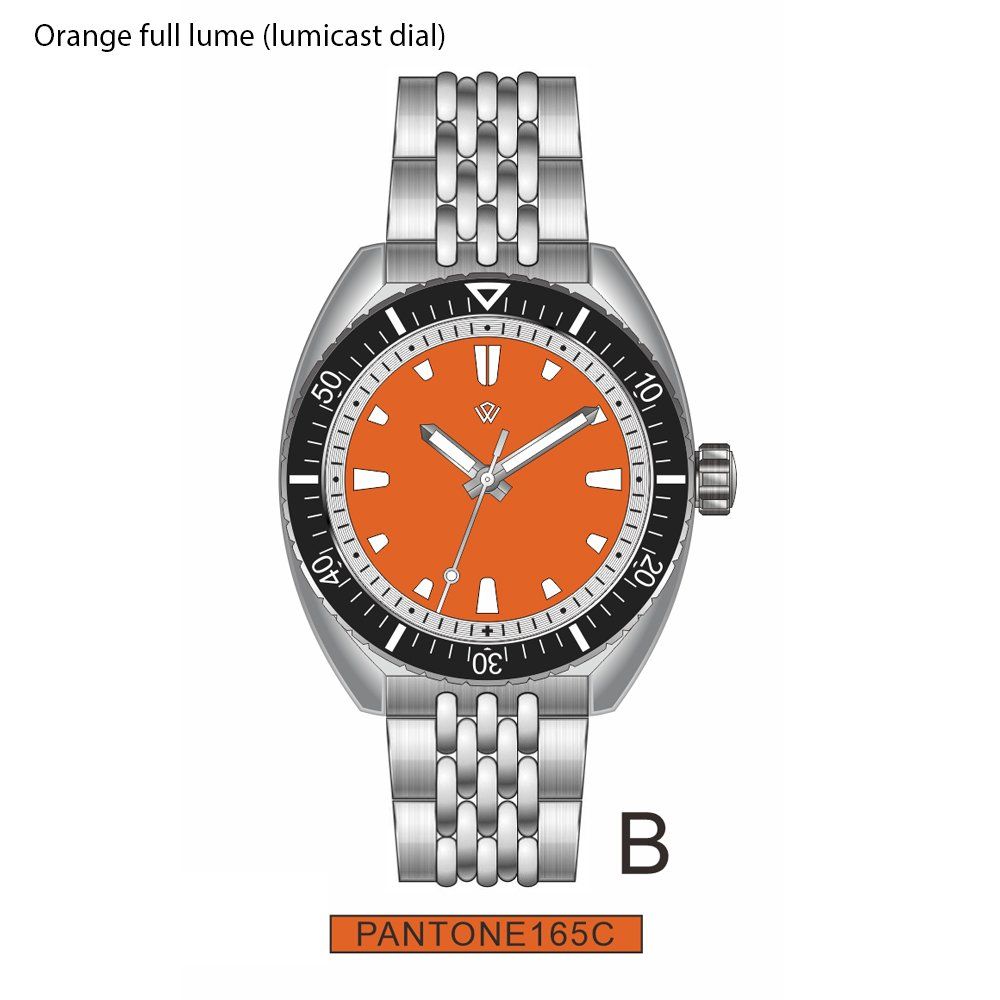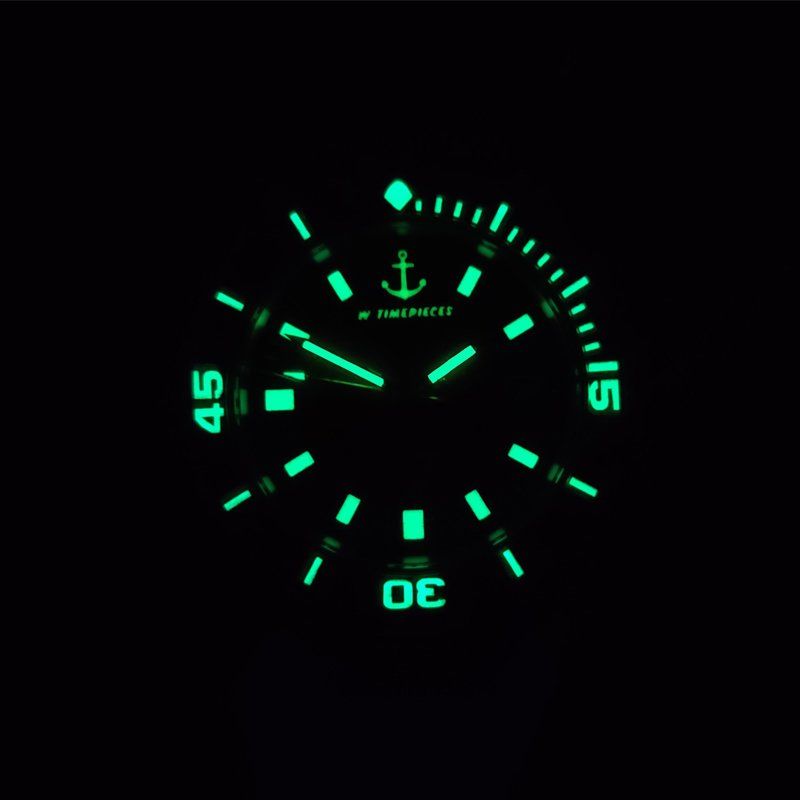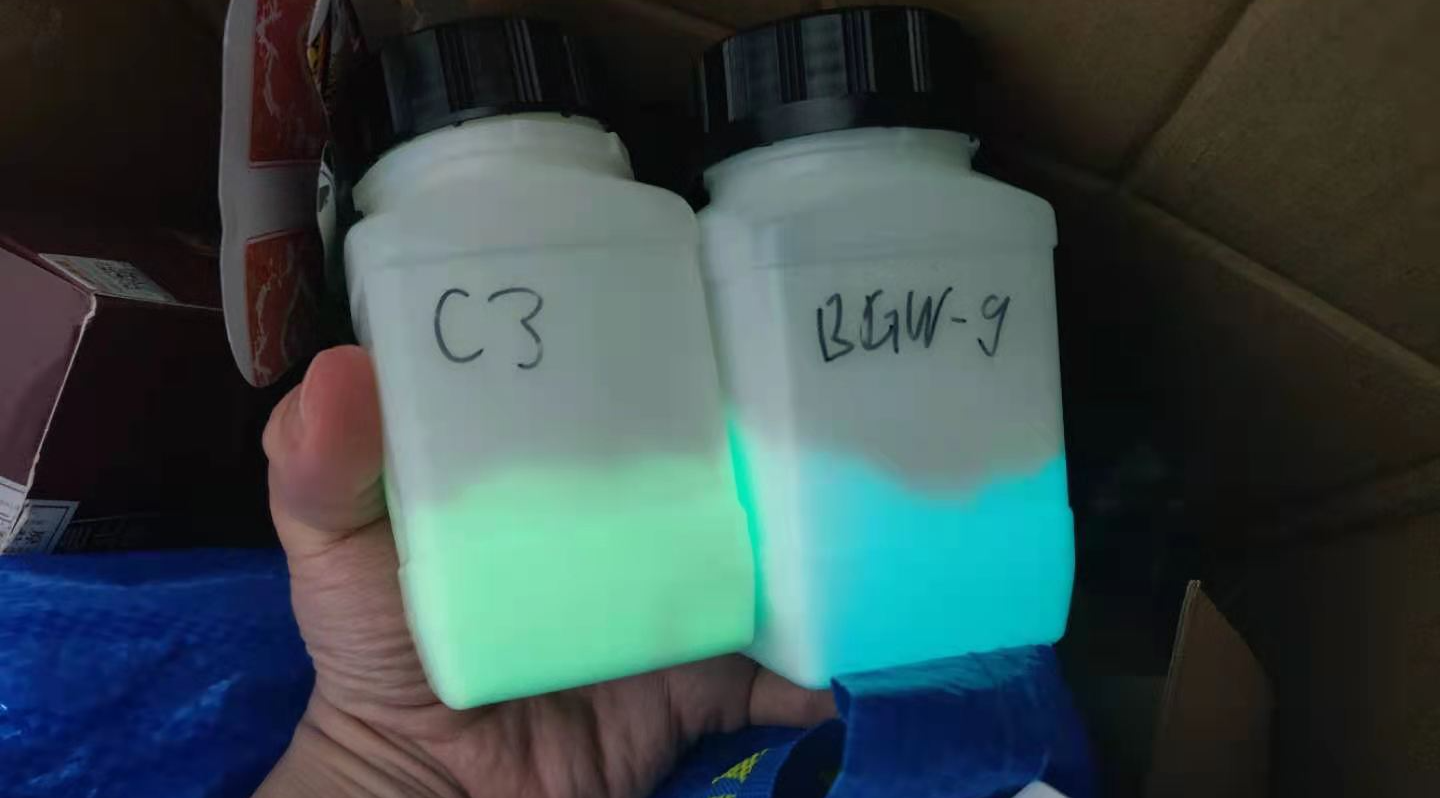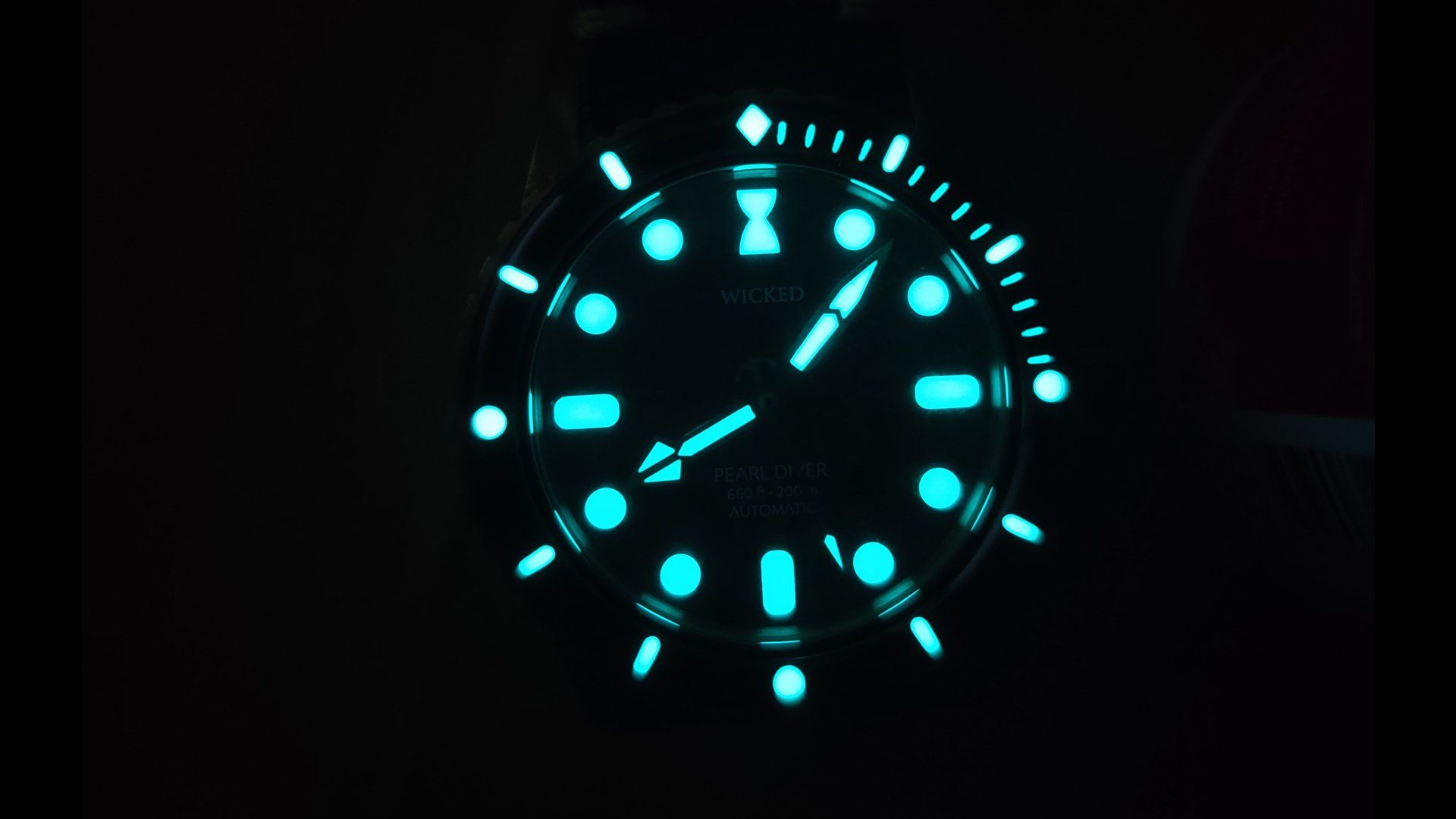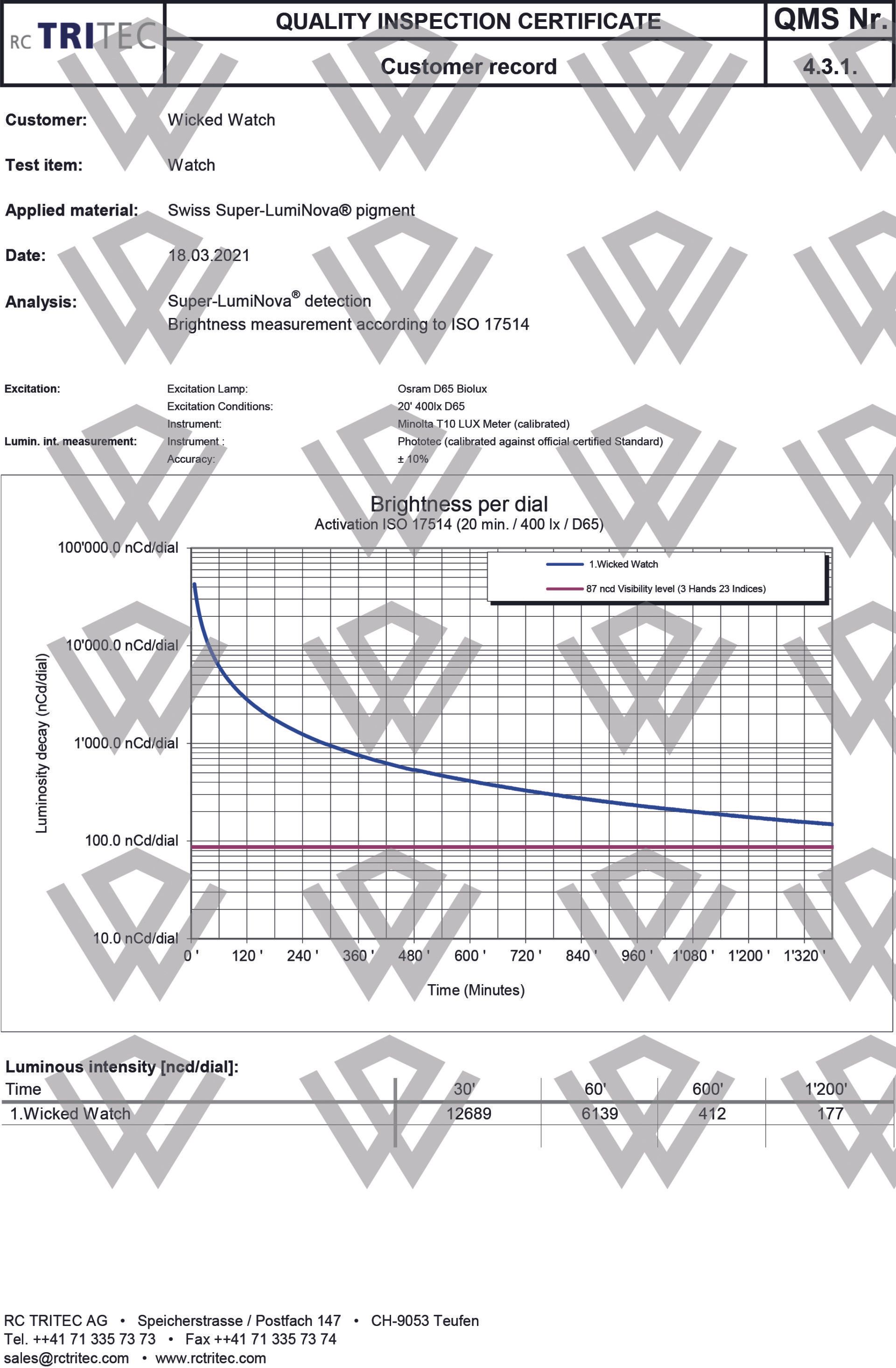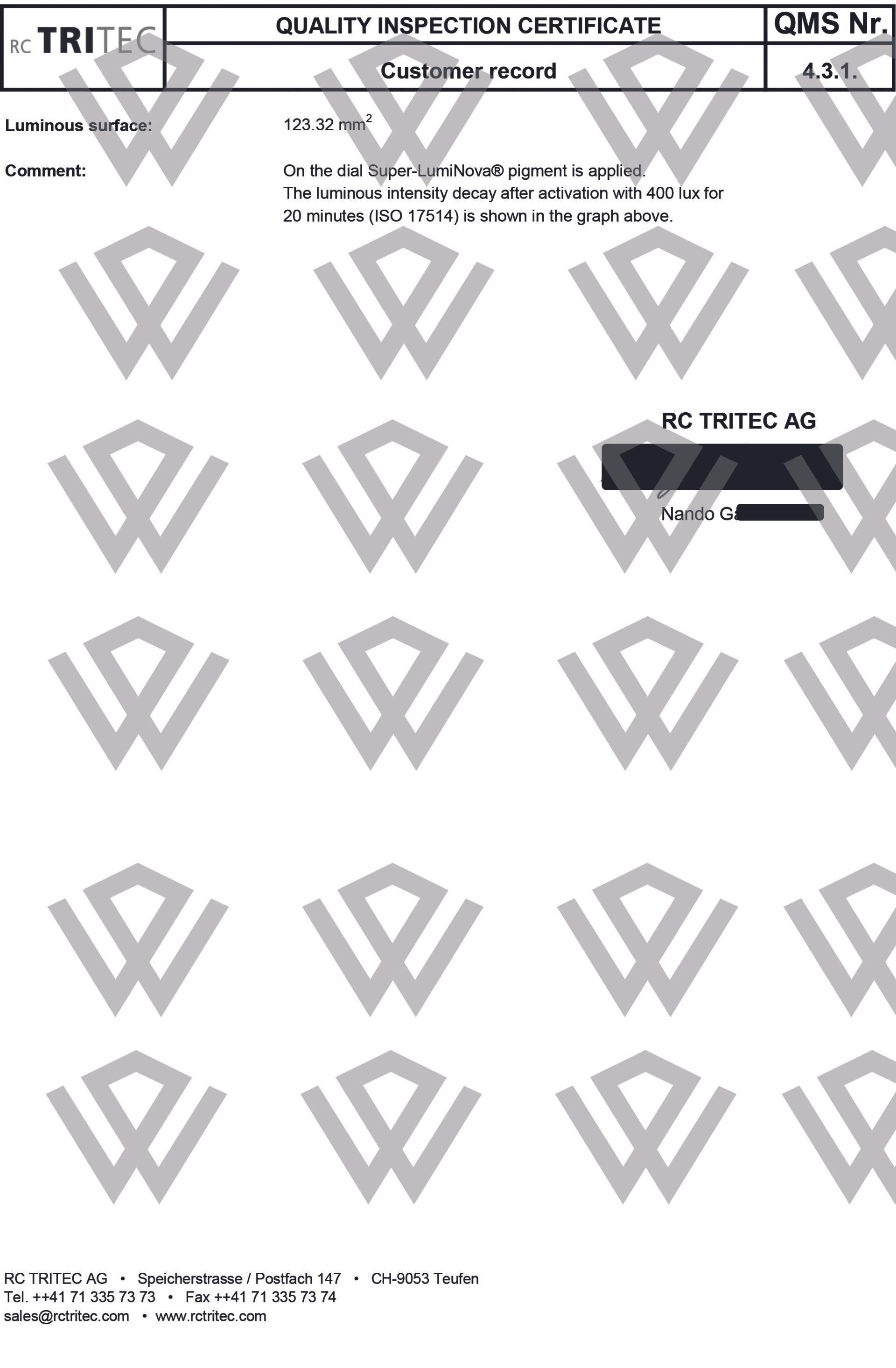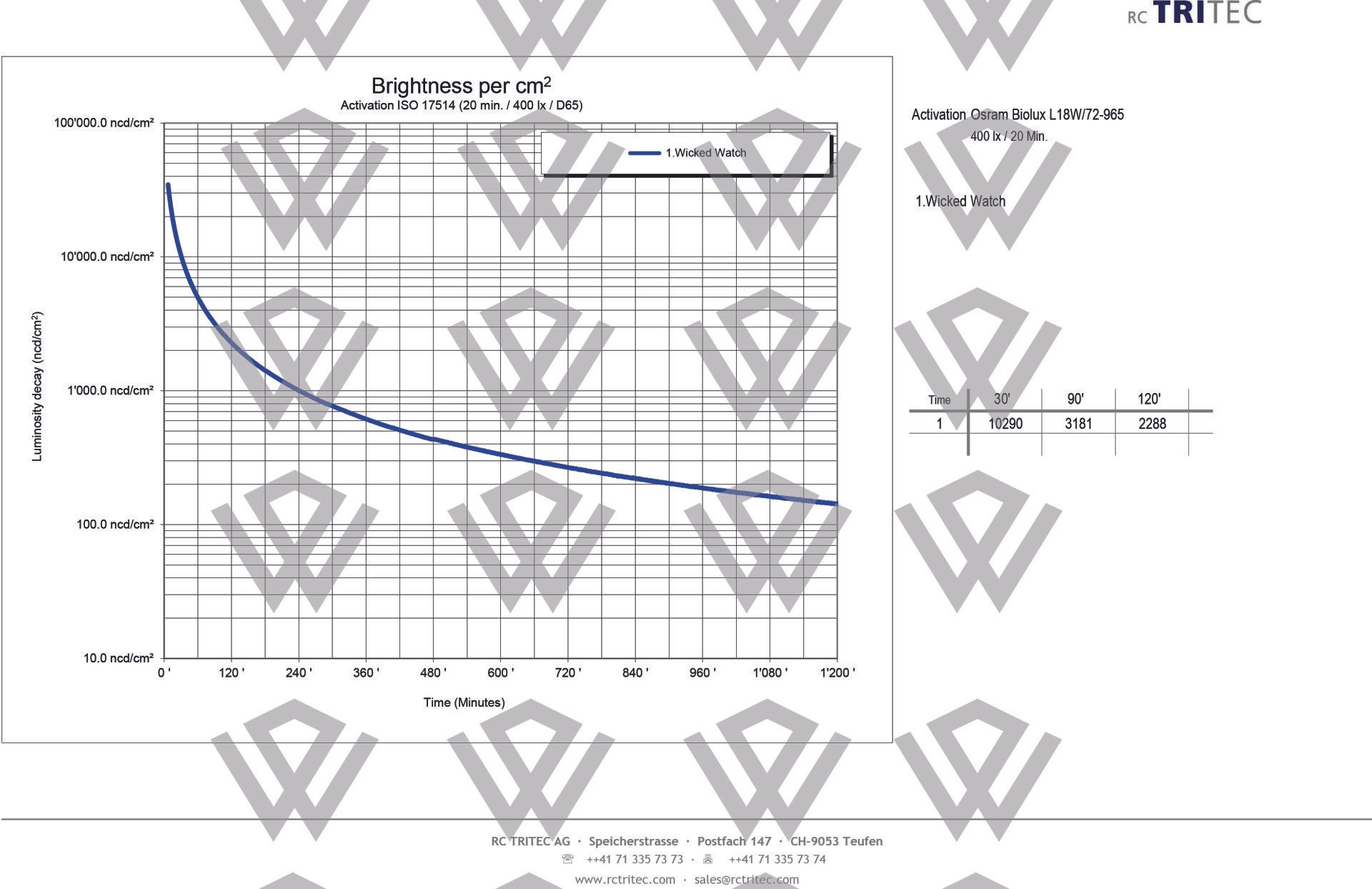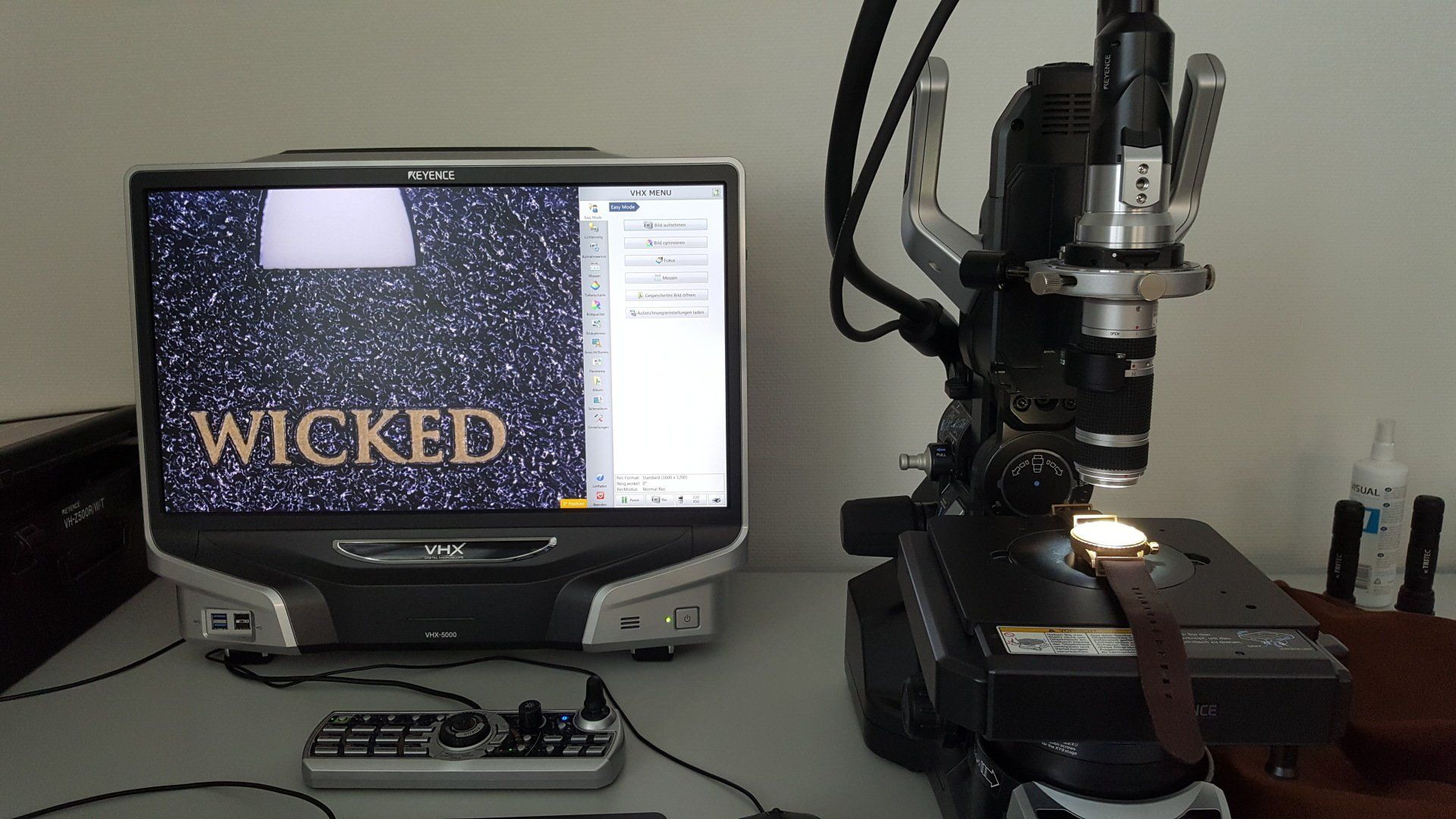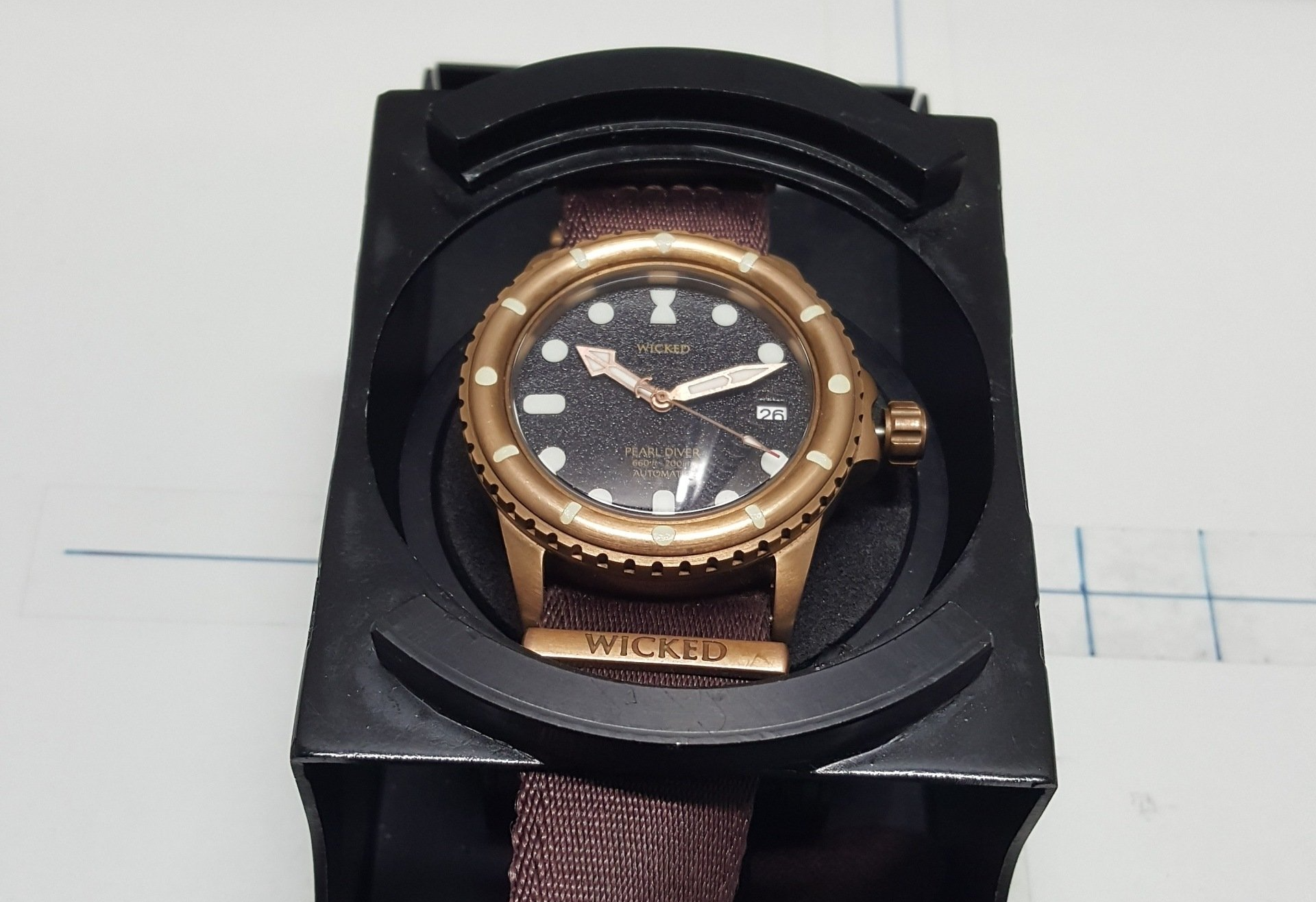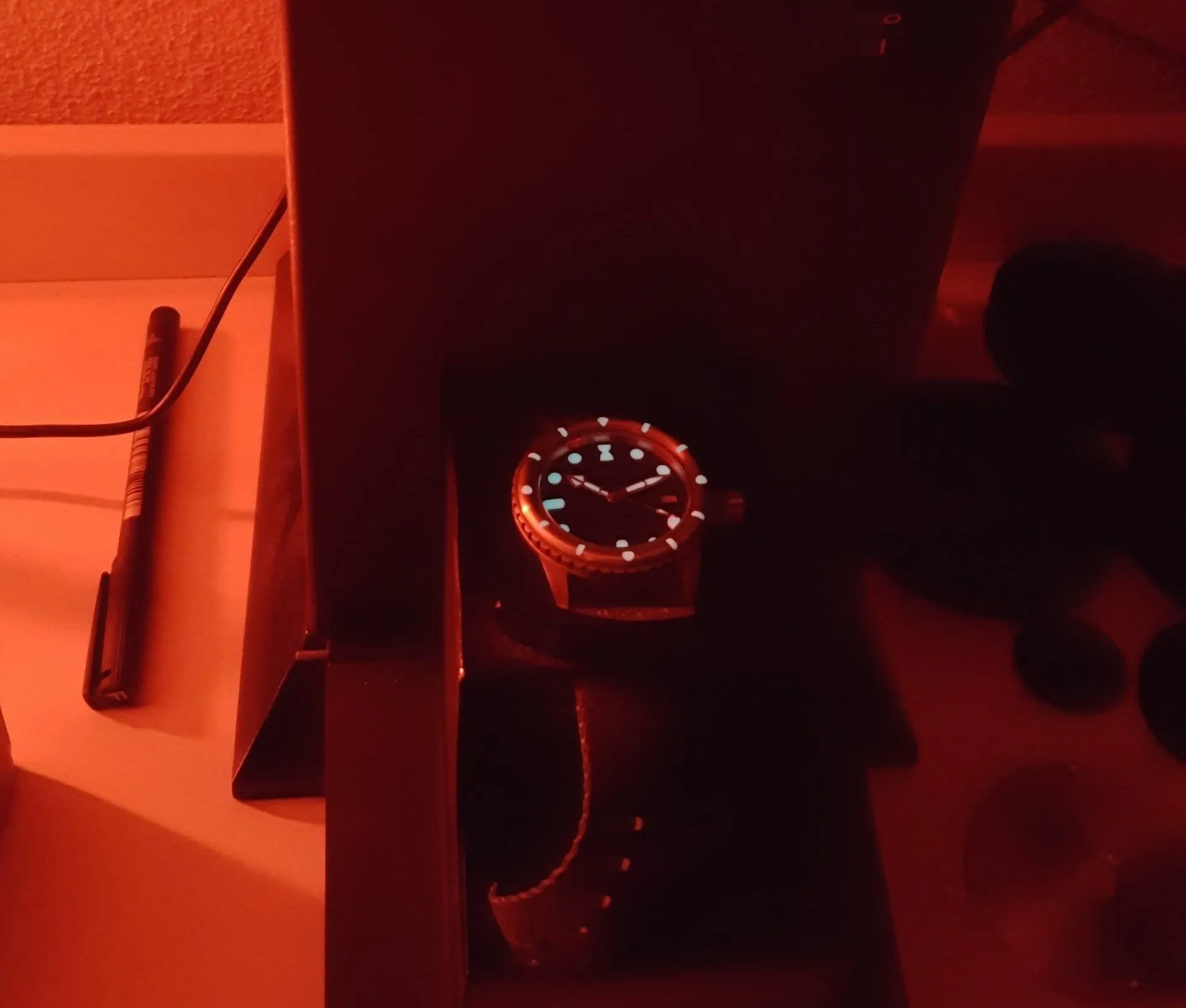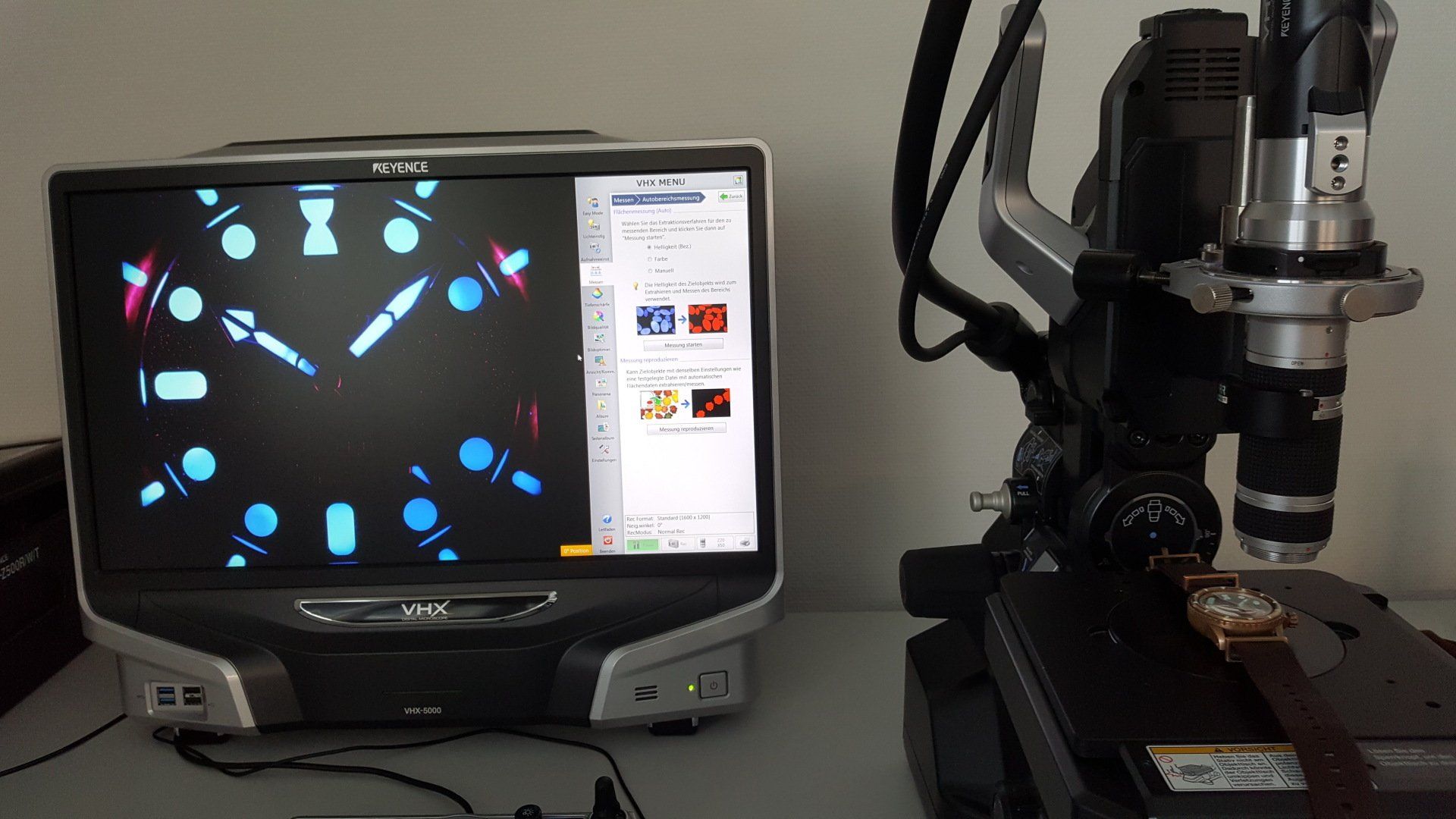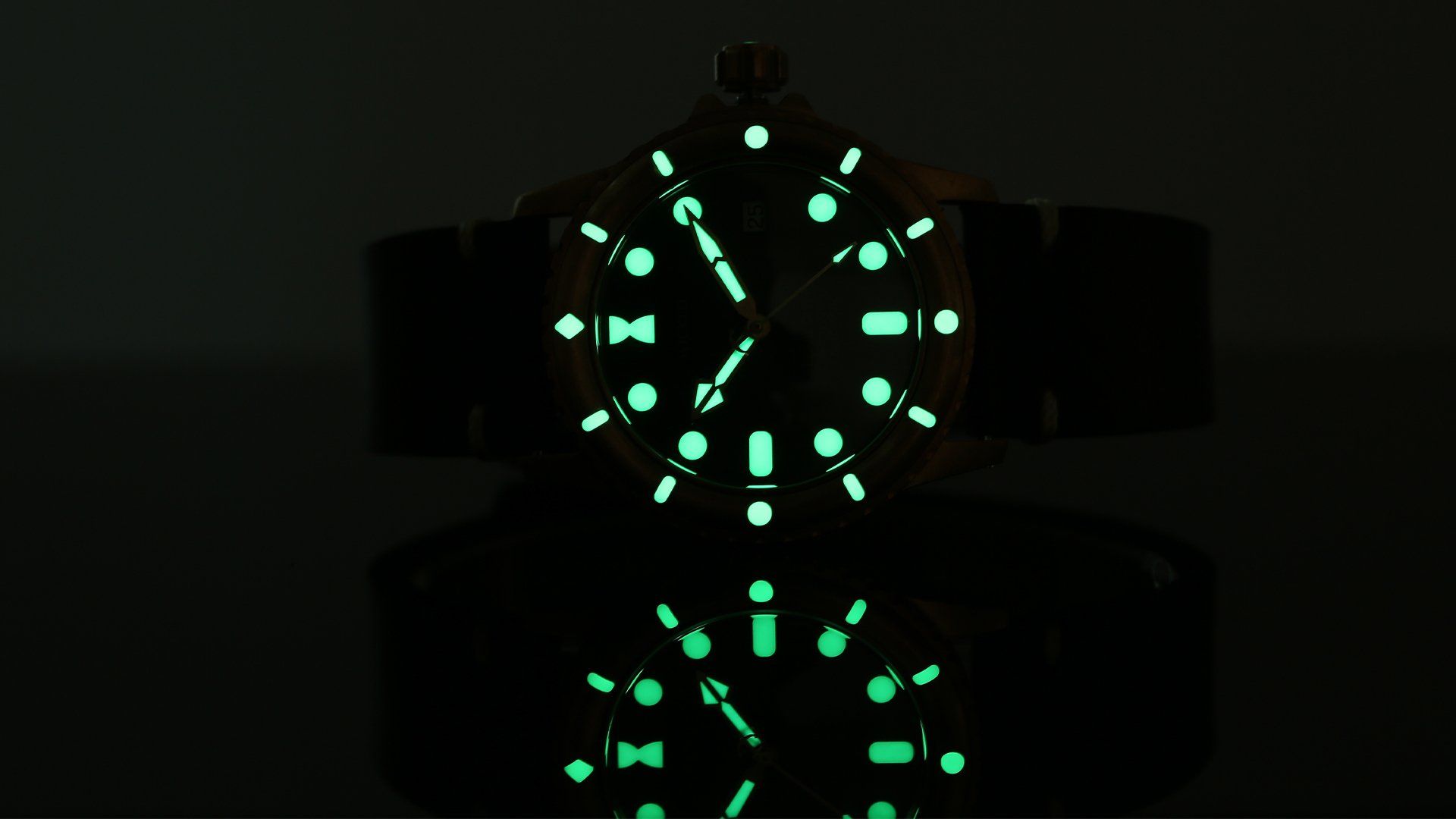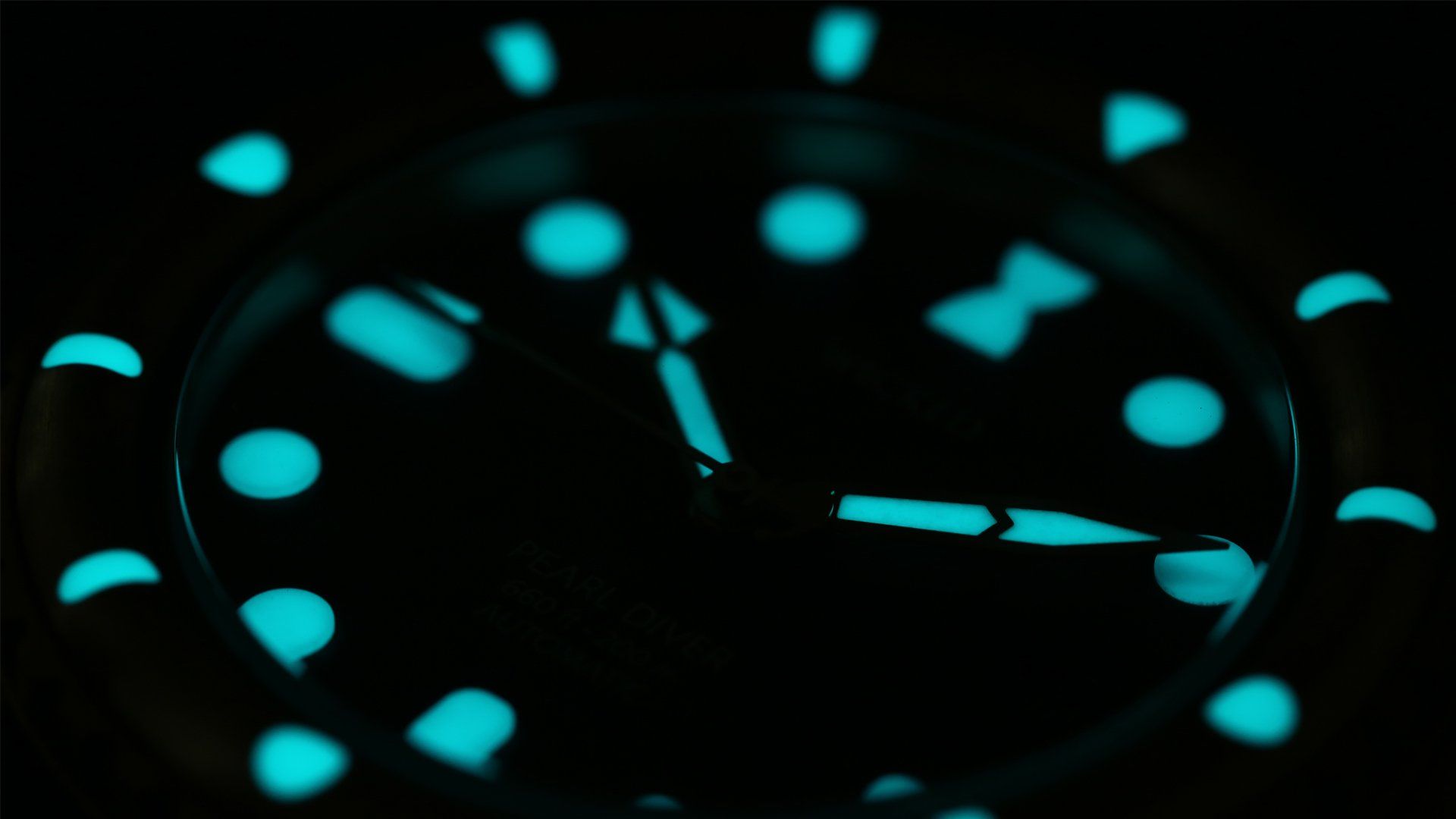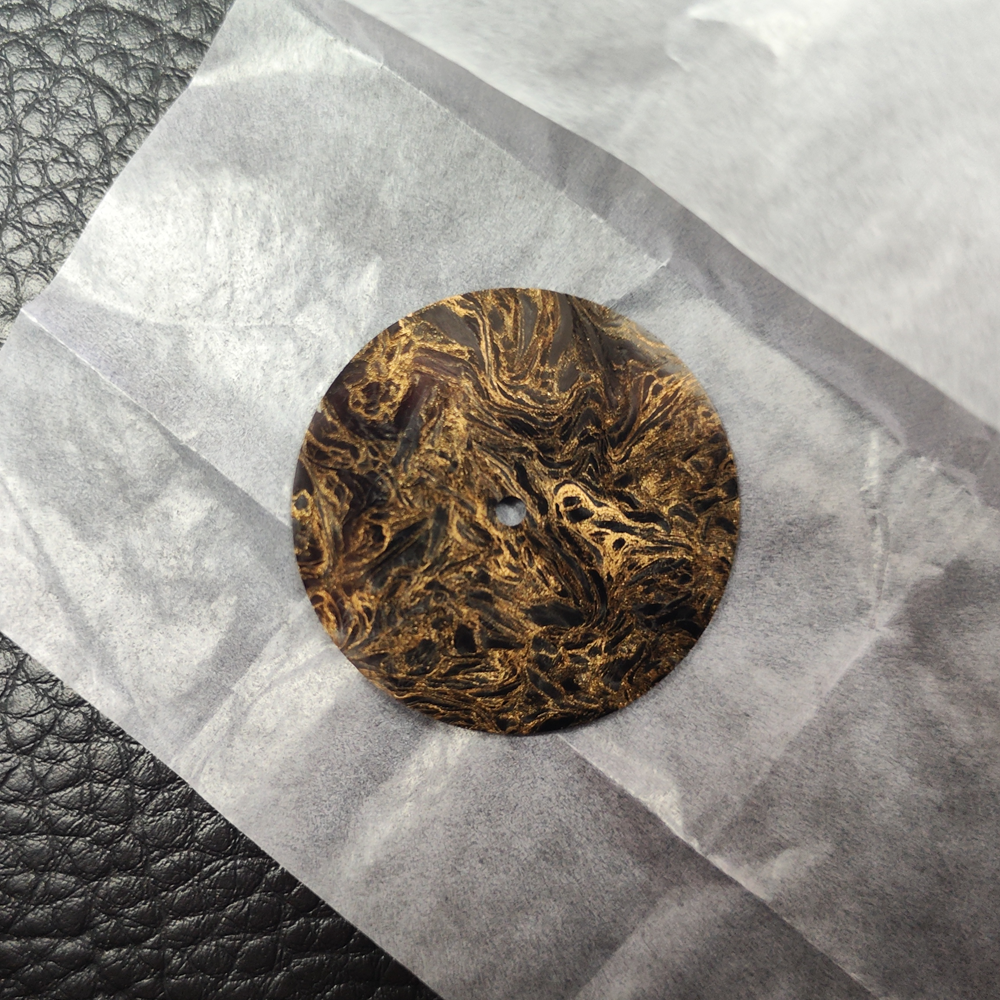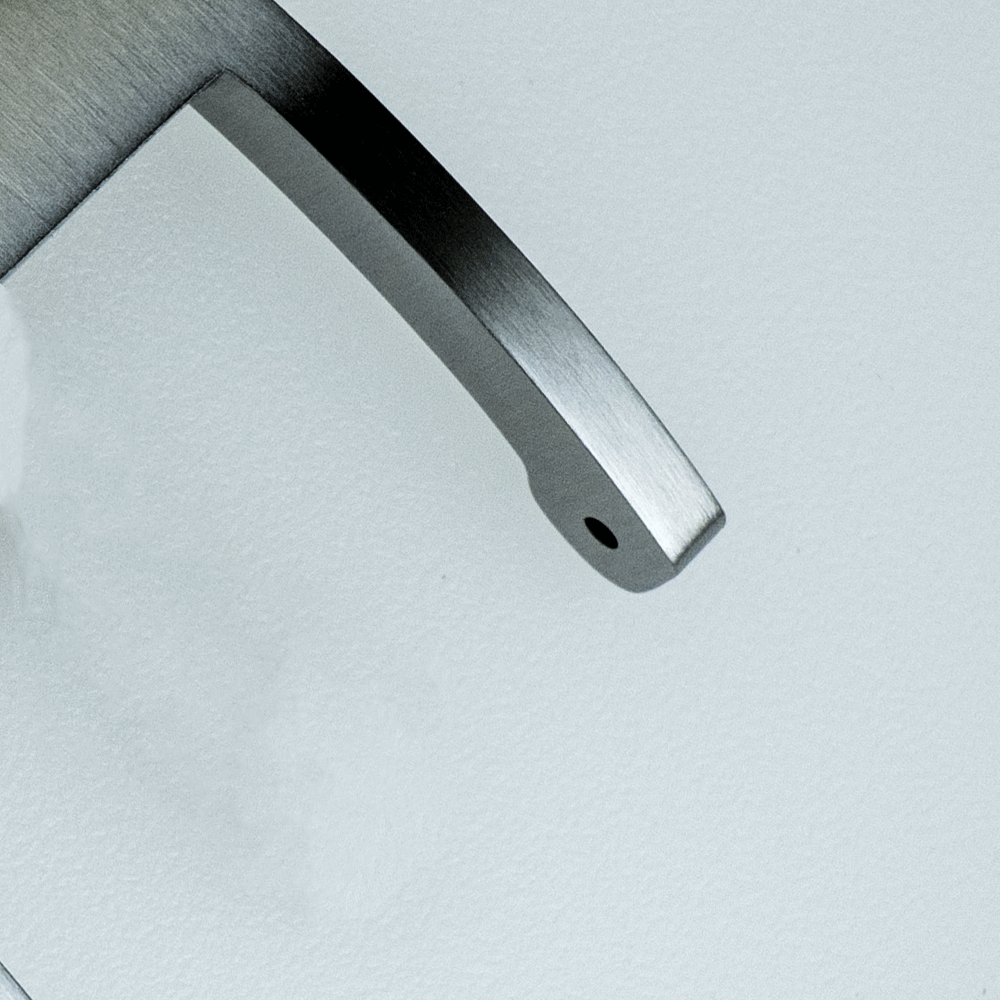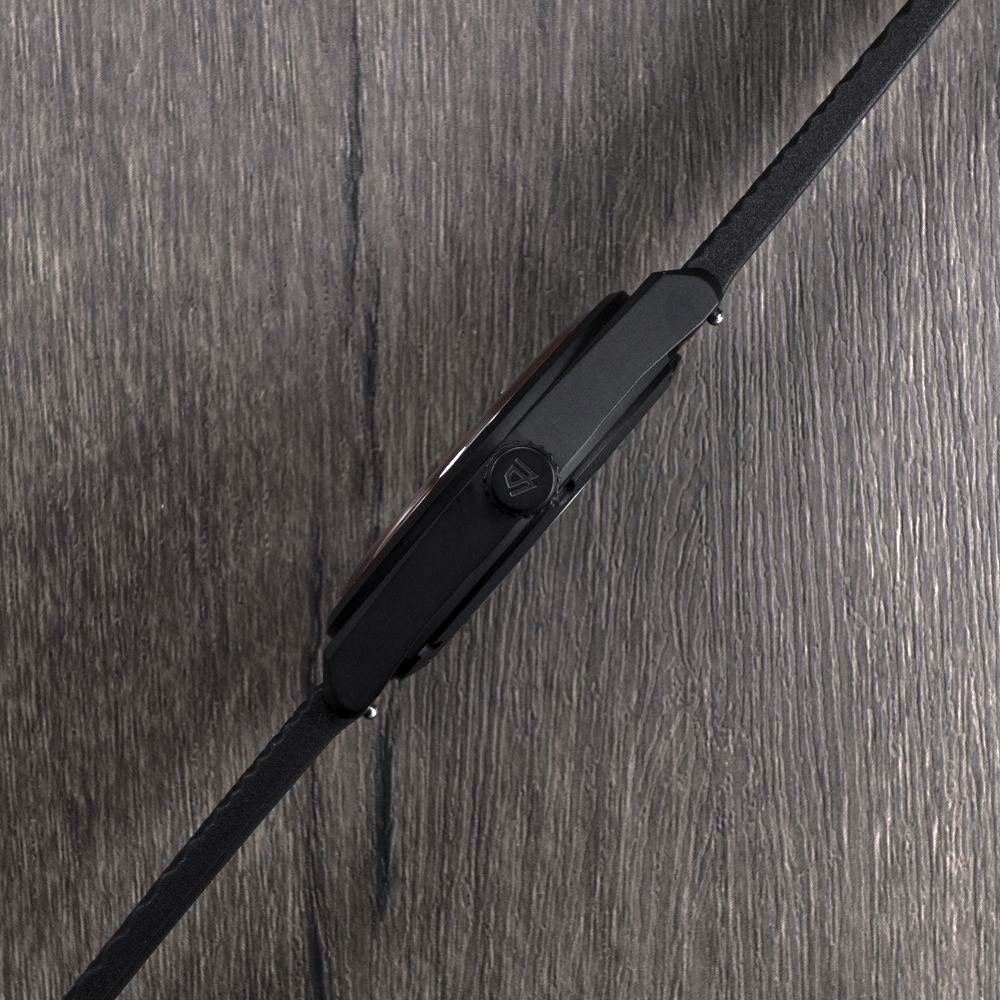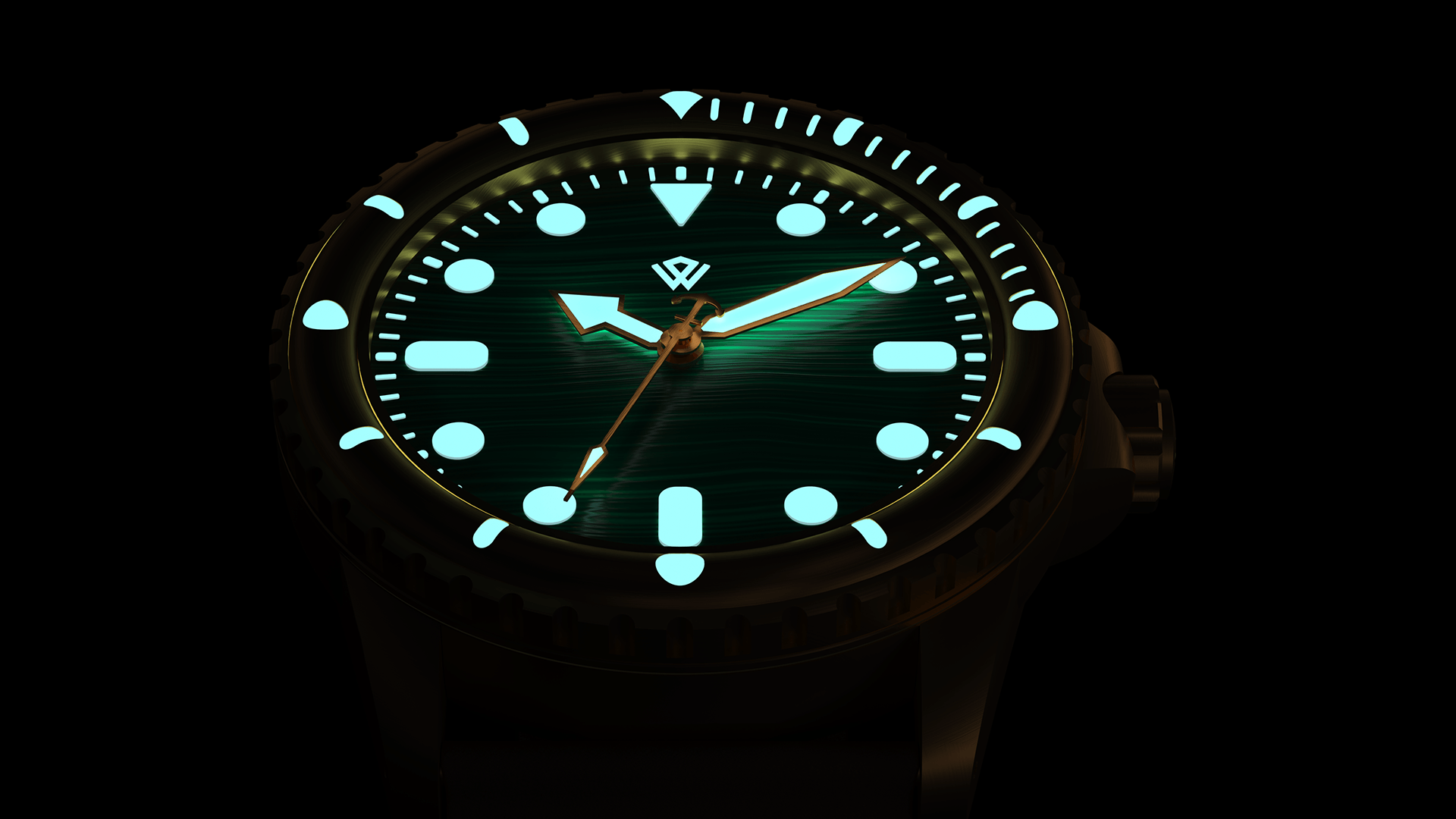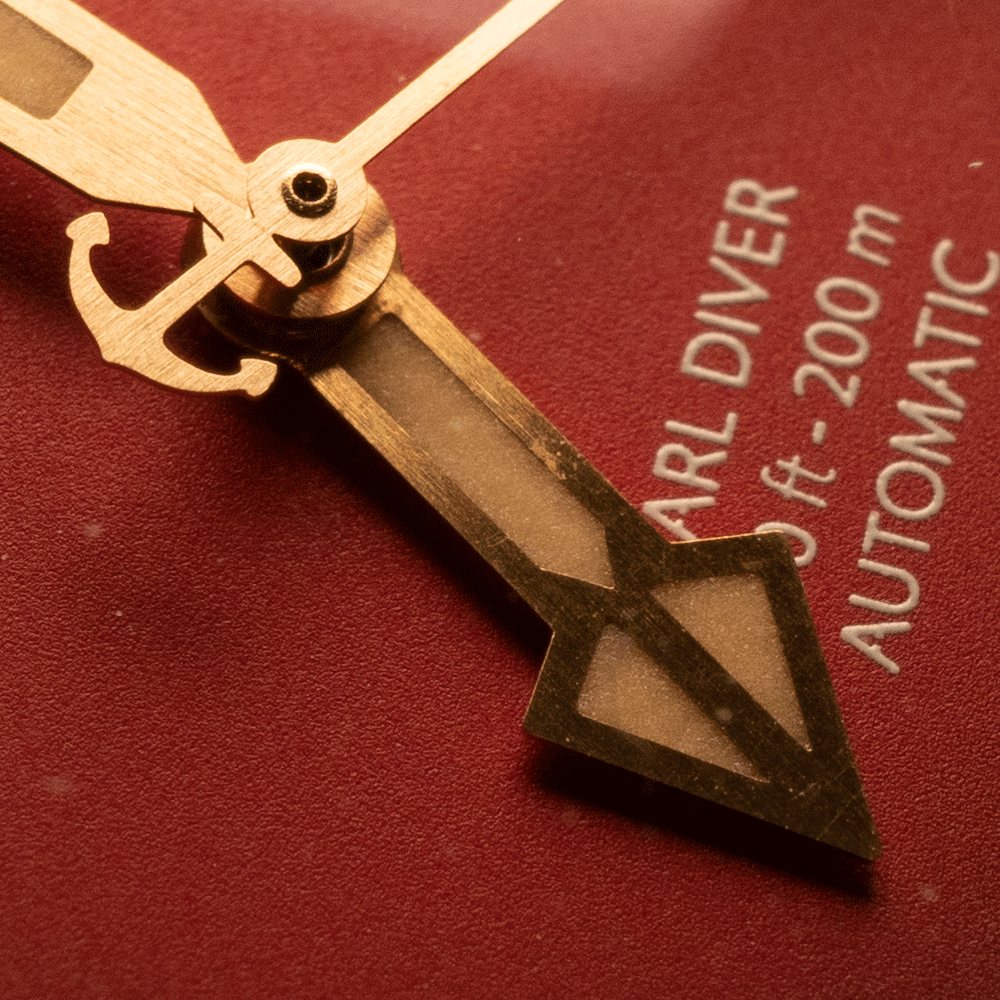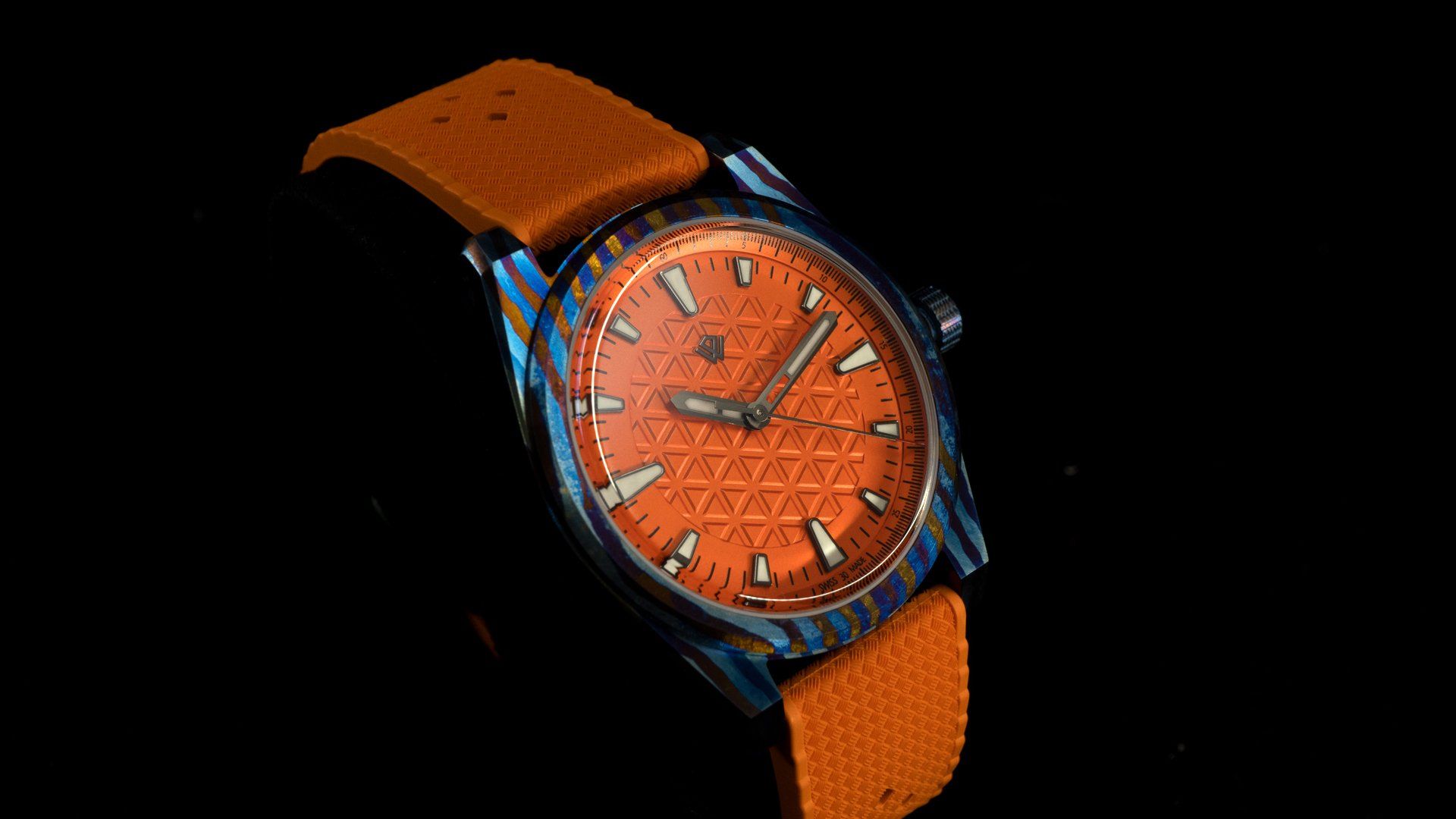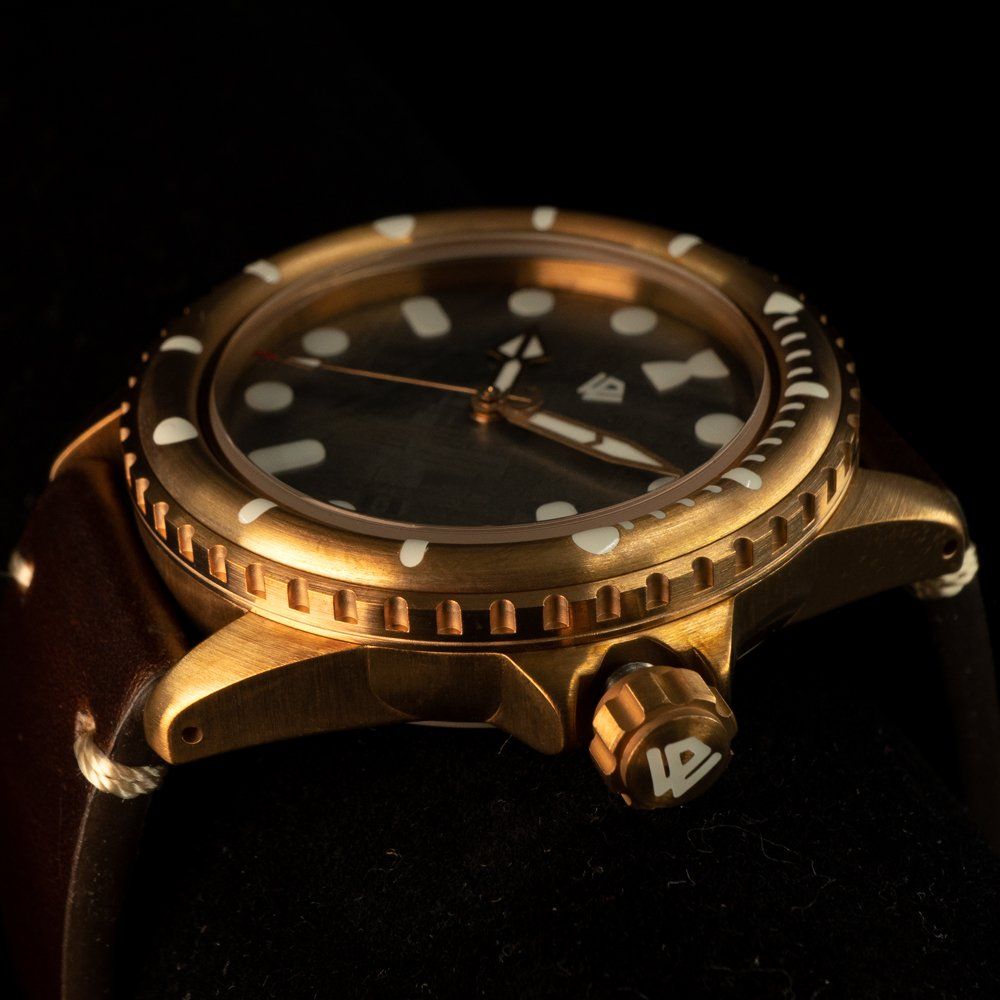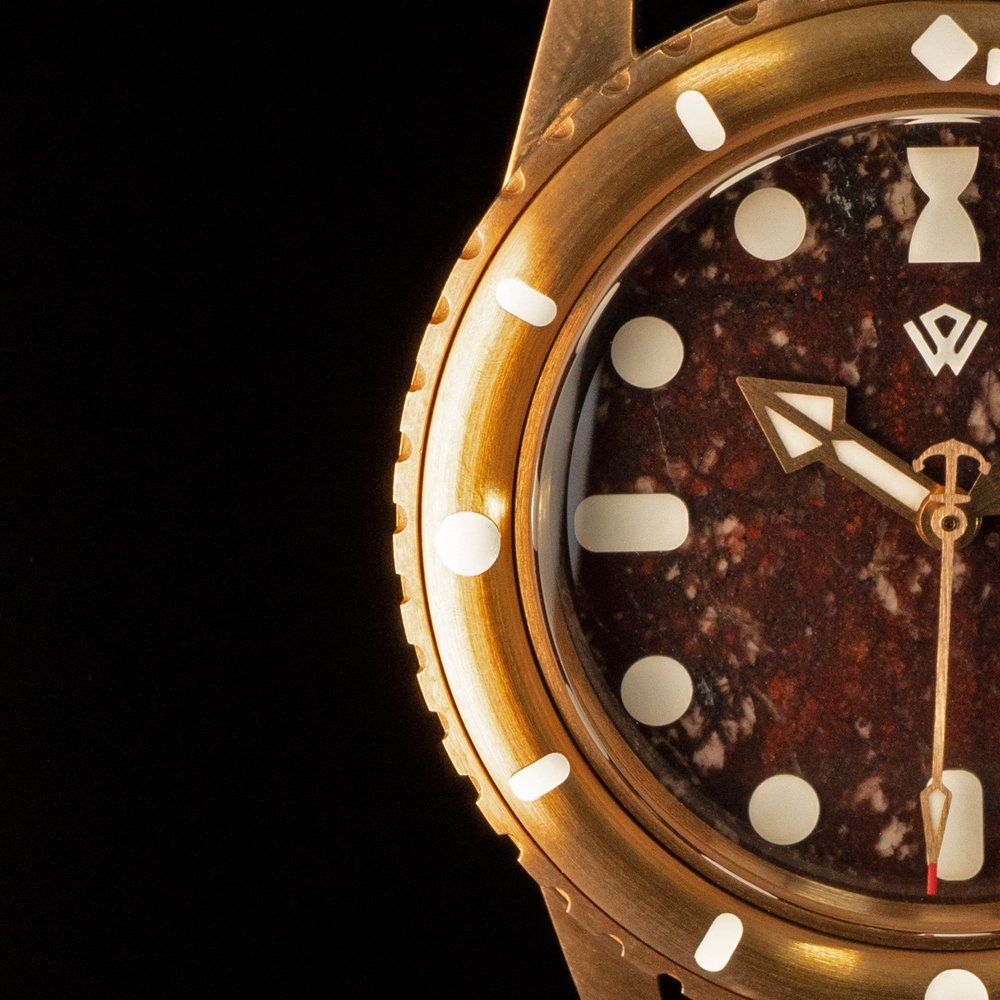How do you define good lume?
For us its is based on 3 main characteristics of the luminous effect:
- Brightness: the lume should have a nice "glow in the dark" effect
- Longevity: the lume is not effective if the glowing effect lasts for only few minutes.
- Clear glow: One of the most difficult tasks was to make the lume glowing homogenously, it means there are no "shadows" visible in the night glow or color differences between dial, hands and bezel of the emission color.
On this sample you can see that the lume on the logo is of a different shade of green and the indices are a bit different from the dial. You can also see some dark spots (we call them shadows) on the lume on the bezel, logo and dial. We have checked the lume application with RC Tritec AG.
The verdict: We supplied the lume pigments for the samples in sufficient quantities to produce enough samples, yet our old supplier decided to mix our pigments with some other lume powder. All this was noticeable by the manufacturer of SLN (Swiss Super-LumiNova®).
Then somehow our trust into the factories in China has reached a point, we did not feel comfortable anymore. After other tests from different factories (about 5-6 "famous" dial factories for other Microbrands) and more negative results, it was not a hard decision anymore.
Now our dials and hands are produced with trusted partners.
How to spot "fake" Swiss Lume
I think this topic gets too less attention, probably many brand owners know it or they probably don't know, but there is a lot of cheating going on in terms of lume. Many factories promise Swiss Super-LumiNova®, but in fact using cheap products Made in China, which costs only a fraction of the real deal.
Like this they optimize their profits.
1kg of Swiss Super-LumiNova® C3 Grade A cost roughly about USD 19'000.00 meanwhile you can find the Chinese "copy" for roughly 53 USD per 1 kg.
We know it because we bought it on local markets in China out of curiosity.
At this point being said: The lume quality of the Chinese suppliers is actually not bad, they can have a pretty decent brightness and longevity of up to 8 hours. But it is not the Swiss Super-LumiNova®, if it was sold as Chinese Lume, I think there is no problem with that. But it is sold as Swiss product by the manufacturer, I think this is not fair.
Now, how do I spot it?
This is actually very hard to find out. First of all you need to know how the powders look like on day time for the 3 major pigments it is:
C3: very light green appearance
C1: white appeareance
BGW-9: white appearance
Then the night glow (so called emission color):
C3: green*
C1: green*
BGW-9: blue*
*in default, there are other emission colors available (Purple, Orange, Ultramarine, Pink, White, Yellow)
Tipp: For example if your BGW-9 lume on the watch is a bit greenish on day time, it could be an indicator that the lume may not be Swiss Super-LumiNova®. The "day" colors can vary on how the lume is applied and with what lacquer it is combined.
But there is no guarantee for this. For example the next photo:
The lume of the bezel insert on this photo is not BGW-9. We did a sample with a partner in China to see the new design of our ceramic inserts. Back in Switzerland we tested the inserts, and it was negative, not Swiss Super-LumiNova®. Eventho the day color was white, and the night glow was blue.
The only "safe" way to tell in this example is the testing by RC Tritec AG, the producer of the Swiss Super-LumiNova®. They can detect their lume pigments with Swiss precision.
If you want to be 100% sure, this is the only way and we decided to do it. Our latest PD samples were all confirmed on Swiss Super-LumiNova®.
So far about that topic, now let's change to something surprisingly.
How long does it last?
This is a question we wanted to answer ourselves too. So we sent our sample with BGW9 to RC Tritec AG and let them test the watch according to ISO 17514 standards. This test is performed for all watch or glowing parts the same way and with same conditions.
The result was mindblowing for us. More than 22 hours the lume was noticable on our watch. According to the feedback, we did a good design of our lume depots and applied enough Swiss Super-LumiNova® to reach such levels.
Our results:
Our watch in the test lab:
With this test report we confirmed our points 1 and 2 for perfect lume à la WICKED WATCH CO.
How about the third point? A clear and unified glow.
Let's let the photos speak for themselves: NO PHOTOSHOP!
